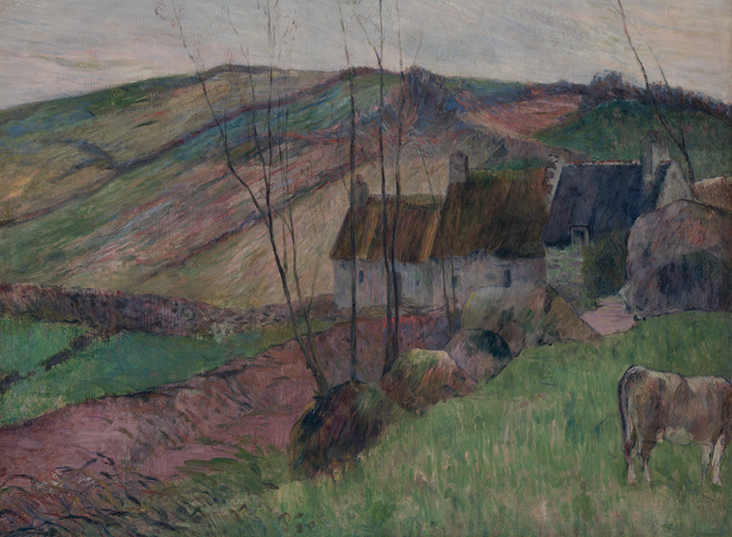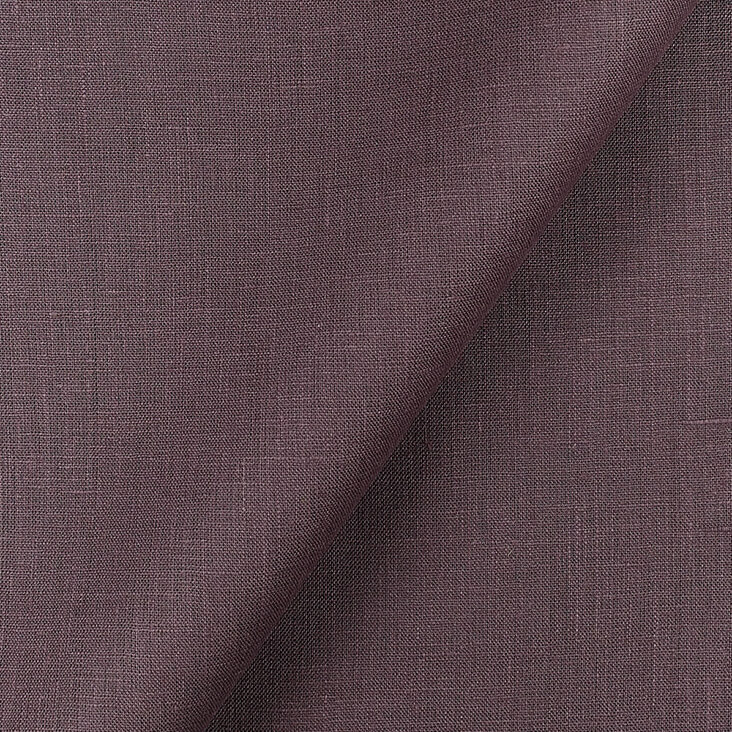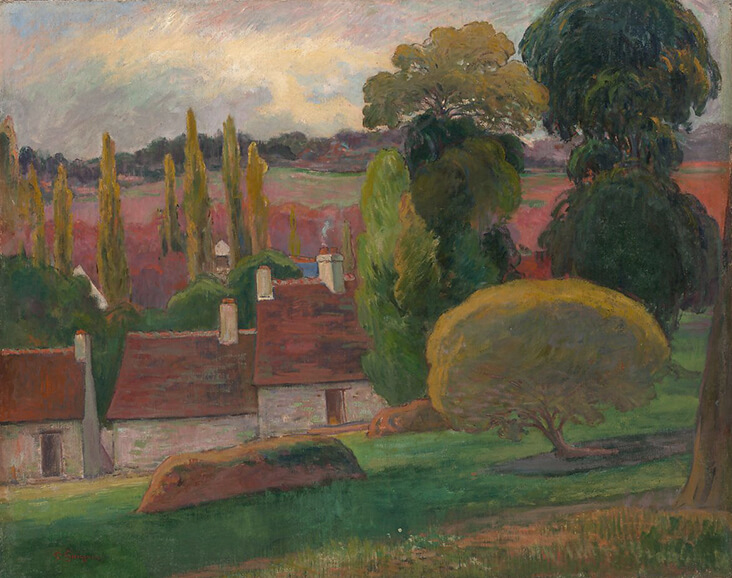FS Colour Series: Montana Grape inspired by Paul Gauguin’s Dusty Warmth
The dusty, muted warmth of MONTANA GRAPE Linen was the ideal backdrop for Paul Gauguin’s rustic scenes, conveying sun-soaked tracks of earth, dry flowers, or the shadowy layered depths of human skin. A leader in the French Post-Impressionist oeuvre, Gauguin heightened colours so he could transcend reality, combining this dreamy shade of purple with feverish jungle greens that together transport us into a magical, otherworldly place. He observed with fascination, “Colour! What a deep and mysterious language, the language of dreams.”
Gauguin was born in Paris in 1848, but his family moved to Peru when he was just eighteen months old. The scenery and culture of Peru fascinated Gauguin and would come to inform his art as an adult, particularly pre-Columbian pottery and the traditional costumes of Lima worn by his mother. When he was seven, Gauguin’s family returned to France, settling in the area of Orleans near his grandfather. Gauguin was miserable at the private Catholic school where he was sent by his mother, choosing to leave and joining the navy at the age of 17. While stationed in the Caribbean Gauguin’s mother died, prompting him to return to Paris. Back in the city, Gauguin found work at a stockbroker through a family friend, and in the next few years, he climbed the ranks to become a successful businessman.
Gauguin married the Danish Mette-Sophie Gad and together they had five children. Their attempt to establish a new life in Denmark was ultimately unsuccessful as Gauguin struggled with the language and his fledgling business as a tarpaulin salesman fell apart. Mette became the family breadwinner as a French teacher, while Gauguin’s burgeoning desire to be a painter ultimately led him to leave his wife and children for a new life in Paris. Here Gauguin became fully immersed in the Impressionist painters’ group and developed his ideas alongside Camille Pissarro and Edgar Degas, painting still life studies and scenes from his life with swift, repetitive brushstrokes.
In the early career painting Reine-marguerites, chapeau et livre, 1876, Gauguin already reveals his inclinations as a colourist, combining a sharp, apple green backdrop of energised brushstrokes with a muted brown hat and a flurry of drying flower petals in deep plum at the centre where our eye is drawn. Despite financial struggles, Gauguin travelled to Brittany several times in the later 1880s, staying at the bohemian artists’ inn known as the Pension Gloanec. During these visits Gauguin was drawn to the simplicity of life in these rustic villages, which were a far cry from the urban sprawl of Paris. In the painting Chaumières au flanc de la Montagne Sainte-Marguerite, 1888 he conveys his love affair with the landscape’s soft light and rugged simplicity, capturing it as a sea of undulating lilacs and greens that slowly merge into one another against a moody grey sky.
Harvest: Le Pouldu, 1890 shares similar soft, natural shades of purple, green, and grey in the background, where looming shadows beyond golden wheat fields suggest the slow fall of summer into autumn. Gauguin had tired of urban life by the end of the decade and in 1891 he set off to explore Tahiti, to escape what he called “everything that is artificial and conventional.” Young Man with a Flower, 1891 was one of the first paintings he made after arriving on the French Polynesian island and captures his deep fascination with the people in this new and unfamiliar land. The young man’s youthful innocence is hinted at through the white flower in his hair and the deep plum shade that brushes his lips.
Gauguin made a brief return to France in the mid-1890’s, roaming the Brittany countryside once more to paint the rural simplicity of small villages set amidst unspoilt terrain. A Farm in Brittany, 1894 was one of the last paintings he would make on French soil before departing to his beloved Tahiti for good. Small houses seem to merge into one with the landscape as dusty purple rooves echo the shades of rocks and mountains beyond; green life sprouts all around them, suggesting a peaceful place where man and nature exist in close, symbiotic harmony.




















































2 Comments
A B
I cringe for his having to enter the world of a stockbroker. Luckily he made it out before his soul and his art were lost to him and to us. I am not familiar with him. I will search more of his works now as they are calling to me. Thank you for a wonderful read!
Rosie Lesso
Thank you – so glad to hear you are inspired by his work. He was such a fantastic colourist!